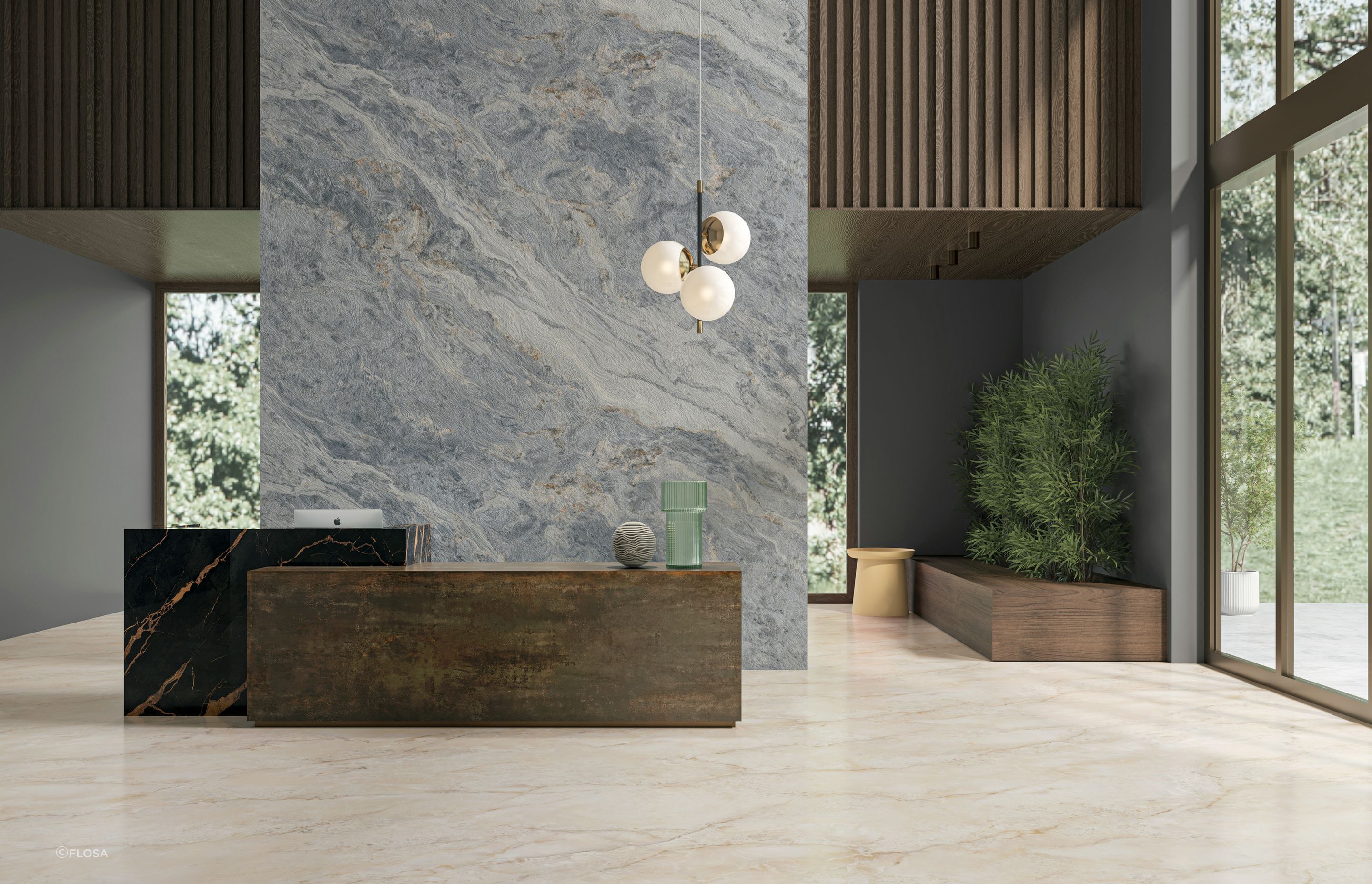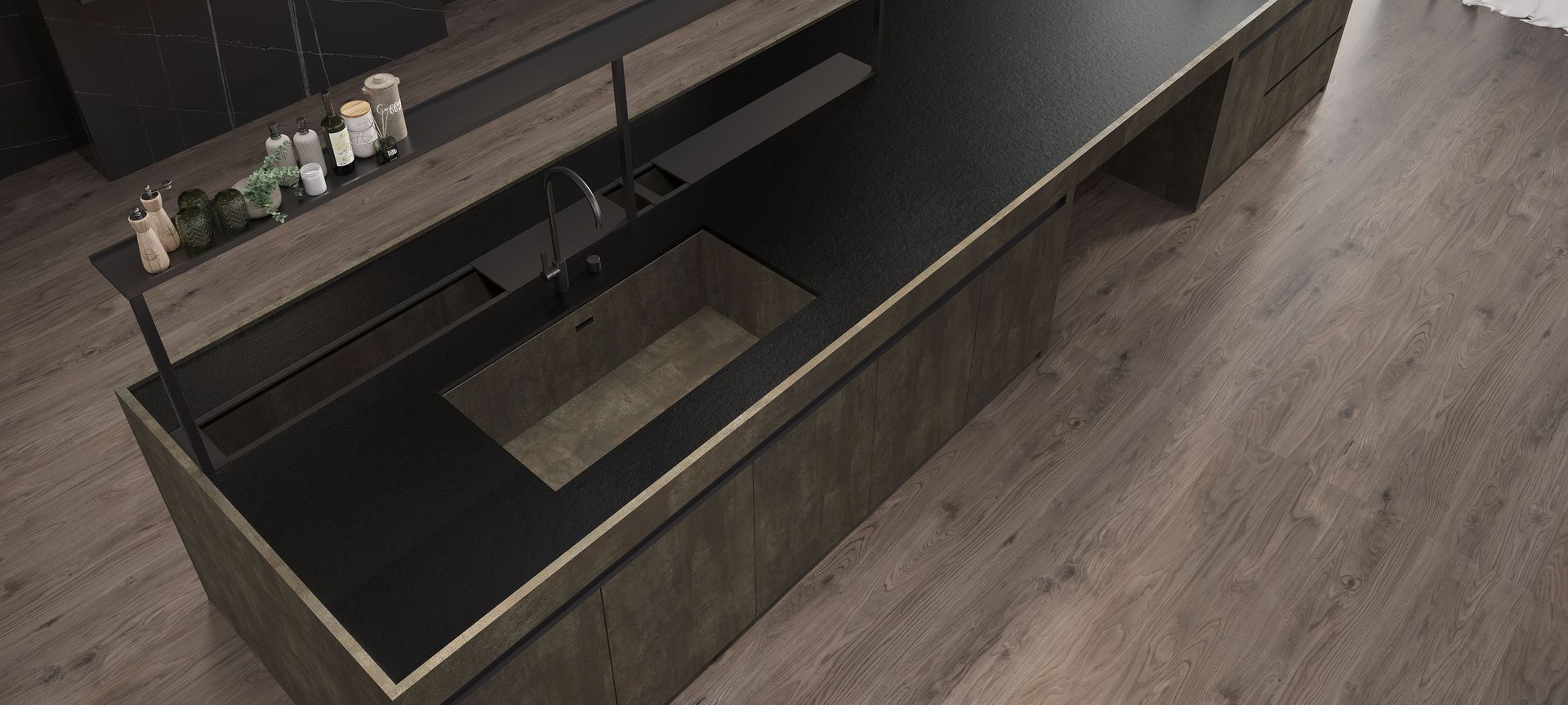For Shan Huang, founder and director of Flosa, the kitchen and bathroom are two of the most important spaces in a home.
“The kitchen is where we prepare meals, gather with family and friends, and spend a significant amount of time and effort. The bathroom is our private sanctuary, a place to unwind with a bath or a hot shower after a busy day at work,” he explains.
After a decade in residential and commercial development, backed by an additional forty-year family legacy in the industry, Huang had a good idea of the New Zealand market — and the gaps that needed to be filled. Seeing architects and designers change their plans due to material scarcity gave Huang the idea to create a business that supplies, in his words, “Innovative and exceptional products tailored for homeowners, developers, designers, and architects.”
“I envision a market where every creative idea can be brought to life without compromise, offering unique and specialised options that elevate not just spaces, but the standards of living and designing itself,” Huang says.
Inspired by his connection to the home’s sacred (and most expensive) spaces — kitchens and bathrooms — Huang knew large-format porcelain slabs would be the key to delivering Kiwi architects, designers, and homeowners with quality, show-stopping materials.
“I believe there's only one product that can bring about rapid, tangible, and stunning transformations to these spaces: large format sintered stone and porcelain slabs. They offer simple, efficient, and swift updates to existing designs, providing an option that looks almost indistinguishable from real stone but at a more affordable price,” he explains.

Why choose porcelain and sintered stone?
Stone is a significant material in modern home design, chosen for its luxury associations and natural beauty. Stone is also expensive, heavy, and porous, making it a difficult material to work with. Unless you have a high (or non-existent) budget, specifying stone for a kitchen or bathroom can quickly drive the price up on an already expensive part of the home.
“Large format sintered stone and porcelain slabs perfectly meet these desires. Their large size, continuous patterns, and textures close to real stone can instantly elevate the design, coherence, and luxury feel of a space visually,” Huang explains.
Unlike natural stone, porcelain has consistent colours and patterns, allowing you to achieve seamless looks at a large scale without the unpredictability of natural materials. It’s also incredibly resistant to wear and tear, with low porosity, making it ideal for high-traffic and wet areas. These features mean there is minimal maintenance required to keep the porcelain looking and feeling beautiful.
“Porcelain can mimic the look of stone, wood, and other textures with astonishing accuracy, giving designers and homeowners the freedom to achieve their desired style without the limitations or costs of natural materials. Its adaptability extends to both indoor and outdoor applications, from sleek and modern kitchen countertops to durable exterior cladding, making it a smart choice for nearly any design project.”

The making of porcelain and sintered stone slabs
For porcelain slabs, the process begins with the selection of natural materials including clay, feldspar, and silica, which are then ground into a fine powder. Pigments and patterns are added to mimic the appearance of natural stone, wood, or other textures.
“This stage is where the design is embedded into the body of the slab, ensuring a consistent look throughout,” Huang explains.
Once the design has been embedded, the powder mixture is pressed using immense pressure to form a thin, dense sheet. This process is crucial to achieve the slab’s strength and low porosity.
“The pressed slabs are fired at high temperatures, usually above 1280°C, which vitrifies the slab, giving it a hard, glass-like finish that is incredibly durable and resistant to moisture, stains, and scratches. Finally, the slabs are cut to size and can be polished or given a matte finish, depending on the desired aesthetic.”
Sintered stone is created using a similar method, with the main difference being the sintering process.
“The material is compacted under significant pressure and then subjected to very high temperatures, just below the melting point, in a process called sintering. This causes the particles to bond at a molecular level without the need for melting, resulting in a material that combines the best attributes of stone and porcelain—ultra-durable, non-porous, and resistant to heat, stains, and UV light,” Huang says.

Flosa’s approach to business
With the lofty goal of offering the market unique and specialised options that elevate the standards of living and design comes a commitment to customer service.
“At Flosa, we pride ourselves on offering personalised services to every client, ensuring the journey from product selection to the final installation is seamless and tailored to their unique needs,” Huang says.
With a curated selection of quality products, in-person sample presentations, full project management services, and ongoing support during installation, Huang and his team deliver a service befitting the luxury finish their porcelain slabs provide.
Learn more about Flosa.
